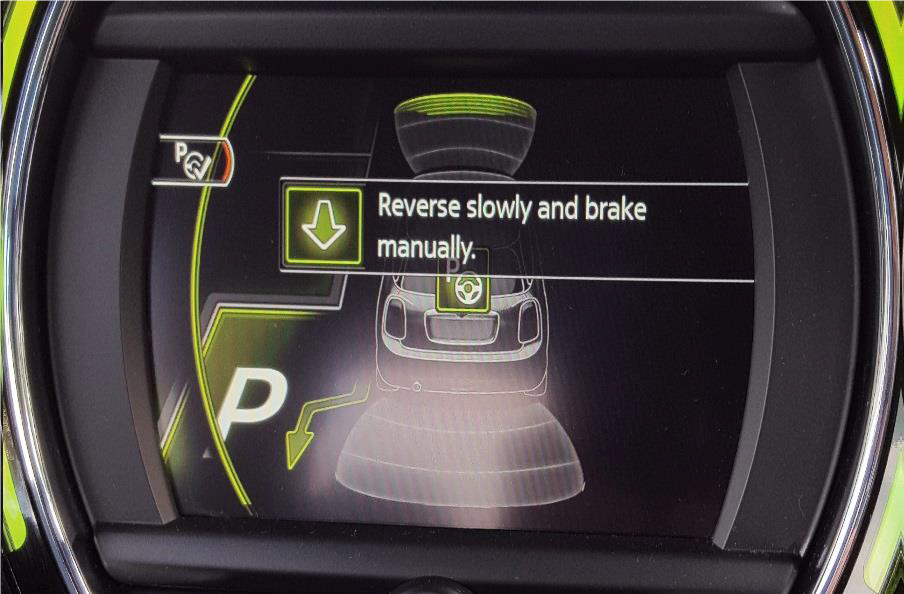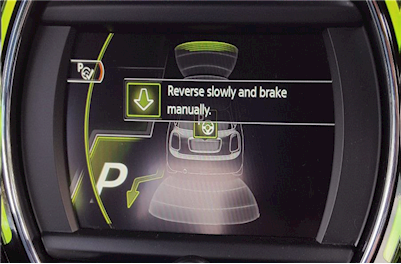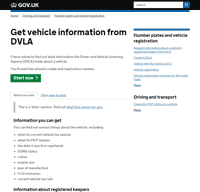Choosing a Car
If you're thinking of changing your car, there are several things to consider to make sure your new car (whether brand-new or second-hand) is suitable and safe for your needs.
Buy as new a car as you can afford
Newer cars generally provide more safety features and better protection for people inside and outside the vehicle than older cars. If possible, choose a car with five or four stars in EURO NCAP tests, ideally five stars.
Have a safety check conducted
If choosing a second-hand car, have a safety check conducted by one of the motoring organisations that provide an independent safety check service.
Check the Car's History and Status
Find out as much as possible about the vehicle's history, before buying it. Always ask to see the vehicle's documents.
Reduce the risk of buying a stolen, or previously written off, car by using the DVLA's online vehicle enquiry service to check:
- when its MOT expires
- the date it was first registered
- its Statutory Off Road Notice (SORN) status
- colour
- engine size
- year of manufacture
- CO2 emissions
- current vehicle tax rate
When you buy a (new or second-hand) car you must tax it. Remember that when a vehicle is sold, its tax (Vehicle Excise Duty) cannot be passed on to the new owner, who must tax the vehicle themselves straight away. See Tax Your Vehicle for details on how to do this.
Check that the V5C vehicle registration certificate ('log book') has a 'DVL' watermark, is the latest issued and the details in the log book are correct at www.gov.uk/get-vehicle-information-from-dvla.
If the car is three years or more old, check it has a genuine MOT certificate and that the car's MOT history is correct at www.gov.uk/check-mot-history-vehicle.
Check the vehicle identification number and engine number match the DVLA records.
A Hire Purchase Information (HPI) check will show if there is any outstanding finance on the car.
Consider the sort of journeys you make most often
For example, a smaller car may be better if you mainly make short, stop/start trips in a town or city.

Consider swapping to an automatic car
You might find driving an automatic car easier than a manual one, although they tend to be more expensive. If you do swap to an automatic car, consider taking a driver assessment or some driver training in an automatic.
Automatic cars can be less stressful to drive than manual cars, particularly when carrying out city driving which involves lots of stopping and starting, or when on a long journey involving lots of gear changes. Many drivers are put off automatic cars as they can be more expensive and difficult to repair, however, cars with automatic transmission are becoming more and more popular (especially with the rise in popularity of electric cars in recent years), making them more accessible.
As automatic cars do not require continuous gear changes and the use of a clutch, the left arm is used much less and the left leg does not need to be used at all. This can help with joint pain and arthritis. The requirement for less physical interactions when driving an automatic car can allow you to devote more of your focus to your observations, speed, and road position, meaning you may be better at spotting hazards and adapting your driving accordingly. This can help if, when using your manual car, you find yourself getting overwhelmed with monitoring hazards at the same time as engaging the clutch and choosing the correct gear.
This short film from the Older Drivers Forum gives useful advice on driving an automatic car.
Consider child passengers
Do you take children or grandchildren on journeys? If so, check that your existing child seats will fit in the new car, and that it has ISOfix points and is compatible with a wide range of child seats. For advice on carrying children safely see www.childcarseats.org.uk.
Consider features that could make driving easier for you


As the technology available in new cars becomes more and more advanced, many features are becoming available that use varying levels of automation to make your driving experience easier and safer. Key autonomous safety features include:
Autonomous Emergency Braking (AEB) is fitted to many newer cars. This technology often warns the driver if it detects a potential collision initially, and then automatically brakes or carries out an emergency stop if the driver does not take action. AEB is also known under names such as Advanced or Active Emergency Braking, or Active Brake Assist.
Early AEB technology would only work at low speeds, but more modern AEB systems can work at motorway speeds and even detect hazards when reversing. If your car is fitted with this technology, always remember that it is not a substitute for your safe driving skills, and you must continue to carry out effective observations and maintain a high level of concentration.
Reversing and Parking Aids alert the driver if objects or people are behind the car, and reversing cameras can help drivers to see behind when reversing. More advanced versions of this are called Park Assistance Systems, which can search for a parking space and even park your car for you.
Some systems will only control the car's steering, whilst the most advanced systems can carry out the the entire parking task for you. Remote Controlled Parking uses this intelligent technology, as well as allowing the driver to carry out the entire parking task from outside the vehicle (as long as they are within the specified range, currently 6 metres) by using a button that is held continuously, either with a remote supplied with the vehicle or by using a smartphone app. Regardless of which parking technology your car possesses, you should always observe for hazards and other road users during the entire parking manoeuvre.
It should also be noted that, as remote controlled parking involves standing outside of the car, you should always observe your surroundings and watch out for other vehicles, especially if standing in a car park or near a road.
Blind Spot Assistance Systems monitor the blind spot of the car. If a vehicle is approaching the blind spot, the system will warn the driver with a visual cue or sound. More advanced versions can brake and steer the car if required. This technology is also known as Active Blind Spot Assist. Drivers should always check their blind spot before changing direction, regardless of whether their car possesses this technology or not.
Lane Assistance Systems use cameras to detect where the car is in relation to the lane markings on the road. If the car is about to leave the lane, the system alerts the driver with an audible warning or vibration. This technology is also known under a variety of names, including Lane Departure Warning, Lane Keeping Assist and Active Lane Keeping Assist.
Some Lane Assistance Systems can physically intervene when the car is about to leave its lane, gently steering the car back into the correct position (the driver should never rely on the technology to detect all oncoming traffic, and should always observe during any manoeuvre).
Adaptive Cruise Control is an advanced form of cruise control that helps the car keep pace with the traffic ahead by automatically accelerating and decelerating. Some advanced systems can use satellite information to maintain a set distance from the traffic in front and even slow down for upcoming corners. Traffic Jam Assist takes this further by assisting the car with following the traffic by automatically operating the brakes and accelerator, with some systems also operating the steering. Drivers must always keep their hands on the steering wheel when operating the vehicle, and be ready to intervene at any time.
Please be aware that you should not rely on autonomous technologies to carry out the task of safe driving for you. You still need to be a responsible driver and keep your hands on the steering wheel, look ahead, and carry out effective observations for hazards/other road users. Some technologies, such as AEB and Lane Assistance Systems, may not work properly under particular conditions (e.g. adverse weather and poorly maintained roads) or they may intervene when it is unnecessary, so it is even more essential that you are alert at all times, regardless of which technology is active in your car.
Further features of cars and technology that can improve your driving experience and help you be safer include:
Electronic Stability Control (ESC) helps to prevents skids. If it detects that a car is about to skid, it reduces engine power and brakes individual wheels to prevent it. ESC significantly reduces the risk of crashes caused by loss of control and skidding, and has been mandatory on all new types of cars in the EU since 2011 and on all new cars since 2014.
Power Steering can make it easier to turn the steering wheel.
Sat Navs can be very helpful, but make sure you set the destination before you set off, and don't automatically follow its instructions as its map may be out of date. If you are using a portable SatNav that is not built into the dashboard, position it safely, out of the way of airbags and in a position where it does not obstruct your vision.
Speed Warning Technology gives the driver a visual and/or audible warning if they exceed a pre-set speed. Some systems also show the speed limit of the road they are on. They are often, but not always, incorporated into SatNavs, but some vehicles have built-in technology.
Daytime Running Lights, fitted in many cars, are lights that are on during the day. They are only fitted on the front so in poor visibility you still you still need to switch on your normal lights manually.
Automated Lights in newer cars automatically switch on headlights and rear lights in the dark or in low light levels (e.g. in a tunnel or multistorey car park), but only if the light switch is set to the automatic position.
Adaptive Front Lighting Systems are provided in some new cars. They direct the headlight beams to the direction of travel, based on the angle of the steering wheel. Some cars have Auto High Beam, which automatically switches high beam lights on and off to improve vision, avoiding dazzling oncoming drivers.
Tyre Pressure Monitoring Systems monitor the pressure of each tyre and warn the driver if one or more is incorrectly inflated. Drivers still need to manually check tyre pressures, tread depths and tyre conditions regularly.
E-Call automatically makes a 112 emergency call when it detects a severe impact. It transmits the exact location of the crash and other data, even if the occupants are not able to call for help, or do not know where they are. It can also be triggered manually.
Test Drive
Always test drive a vehicle before you buy it to familiarise yourself with it.
During a test drive check you
- have a good, clear view while driving and when doing manoeuvres, such as reversing
- can see and operate all the instruments and controls
- can push the pedals all the way down without pain
- can easily see the speedometer from your normal driving position
- feel comfortable driving the vehicle, and it is running smoothly and working properly
Consider telematics insurance

Telematics insurance, more commonly known as black box insurance, is when an insurance provider installs a black box inside your car in order to monitor your driving habits and mileage, basing the cost of your insurance on these factors.
Telematics insurance is widely known for being the type of insurance that younger drivers take out, as it tends to be cheaper than standard insurance and allows for premiums to reduce year on year if the driver displays safe habits. However, telematics insurance can be a great idea for mature drivers too, for the following reasons:
- Standard driving insurance can be expensive for mature drivers, especially if you are over the age of 70, and telematics insurance allows you to demonstrate your safe driving abilities, possibly resulting in premiums lower than those from standard policies
- If you do not drive a lot, or only use your car for short journeys, your premium may be reduced, as some telematics policies are based on mileage
- You may see premium reductions if you drive outside of peak traffic hours (as peak hours see higher accident rates)
- Telematics insurance may be the best option if you have several claims on your record, or if you passed your driving test later in life, as you will get the chance to demonstrate safe driving to your insurance provider
Further Information
- Choosing Safer Vehicles (RoSPA Checklist)
- Choosing a Car (RiDC Guide)
- RoSPA's Advice on Autonomous and Electric Vehicles









